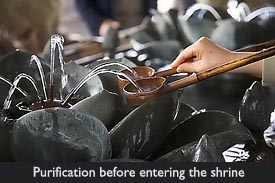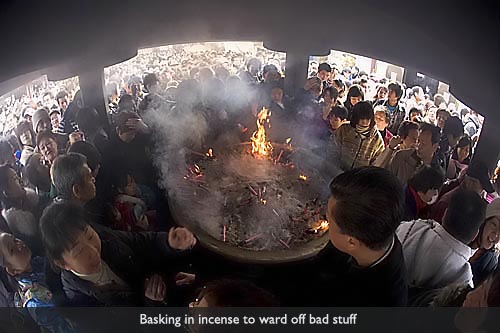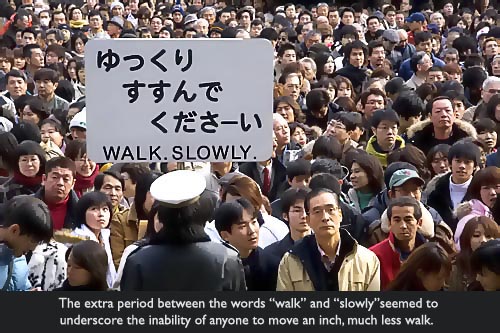During the first few days of the year, many people in Japan visit a Shinto shrine to welcome in the new year. This first (and for many people the only) annual visit to a shrine is called hatsumode (初詣).

People visit shrines to make wishes, pay respect to the spirits enshrined at the particular location, spend time with family and friends, and to seek blessings and protection in the form of mamori.

It's not really a religious undertaking, say in the way that going to church, synagogue or mosque is. It's more custom and tradition. Few people actually believe in spirits and such, but it seems like almost everyone undertakes the hatsumode visit.
I've been to many shrines over the years. This year, I decided to make my maiden visit to the Kawasaki Daishi (川崎大師), or Heikenji (平間寺), founded in 1128. Kawasaki Daishi is the third most-visited Shinto shrine in all of Japan during the hatsumode period, with up to three million people visit the shrine during the first three days of January.
The person/ spirit who's honoured here is a priest named Kukai (空海) or Kobo Daishi (弘法大師), who founded the Shingon sect of Buddhism in Japan and supposedly developed the hiragana system of writing used in Japan. All-in-all a highly accomplished man.

The first thing you need to know about hatsumode is that there are tonnes of people, especially at popular places like Heikenji. Even though I got there early in the morning, there were already thousands of people in line, with more arriving by the second.
Of course, since this is Japan, everything was quite organised. People waited patiently in line, with police and shrine staff directing traffic, allowing small groups into the main grounds every few minutes, everyone proceeding in the same direction in an orderly fashion.
In anticipation of the crowds, all the streets in the immediate vicinity of the shrine were closed to traffic, with police standing by to direct drivers away. The streets were lined with temporary stalls manned by merchants of all description selling food, drinks, trinkets, souvenirs...basically anything to make a quick profit.

Speaking of profit, can you imagine how much money the shrine rakes in during this period? Three million visitors, all donating and spending money. A simple piece of paper with a pre-set fortune statement (one step up from a fortune cookie) sets you back 100 Yen, with slightly more complicated fortunes costing several hundred Yen. More personal attention in the form of participation in shrine ceremonies costs many thousands of Yen, while official trinkets run thousands of Yen too.
Maybe I'm being too cynical, but it's definitely a big business, with many small businesses on the side benefitting from the crowds (and probably paying a hefty fee to rent space from the shrine for the few days). It's all cash-based and tax-free too, which is any business owner's dream.

In any case, people of all ages visit shrines like Heikenji at the beginning of each year, and everyone seems to enjoy the outing, despite the inevitable crowds.
Japan's society has changed tremendously in the past 50-60 years, with many traditions disappearing or falling by the wayside. At the risk of sounding overly sentimental, I have to say it's nice that the tradition of the New Year hatsumode is alive and well, and seems likely to continue for many years.